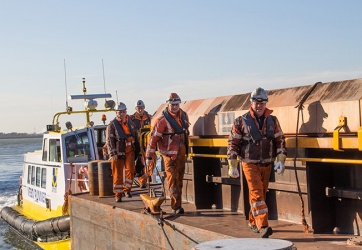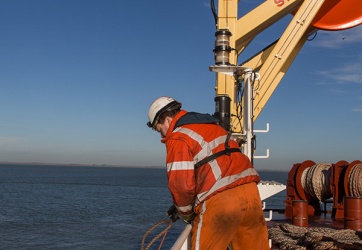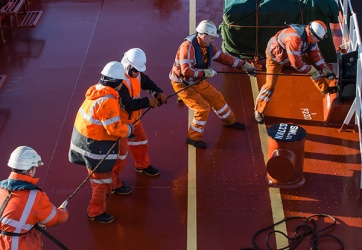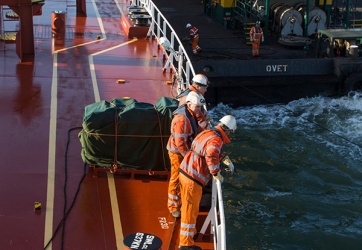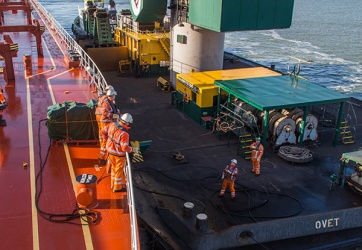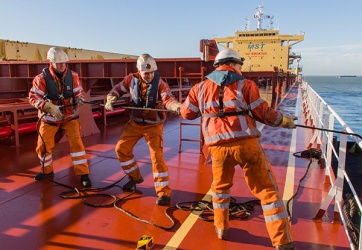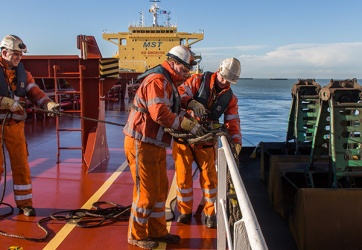
Safety and Environment
In port areas, nature is always around. OVET dry bulk terminal does everything to find the best possible harmony between business activities, local residents, neighbouring businesses and the surrounding nature.
Members of the management team or commercial department visit the terminals and floating cranes monthly, together with the wharfinger on duty. This is the time when the quality, working conditions, environment and technical state are being marked. When this mark is below the internal standard of 8 out of 10, restoring measures will be taken directly. Due to these regular terrain tours, the best feeling with the workplace is present and the Good Housekeeping measures are being followed correctly.
OVET also invests in solutions for relieving the environment of burden. For example, the automatic train loader in Vlissingen is shielded on three sides (elevator belt is fully covered), the input funnel is provided with windshields on three sides (dust and sound reducing measures), it includes energy efficient electric motors to restrict the inrush current and it also includes a dust spray cannon to be able to precipitate dust emissions. OVET has the disposal over dust control vehicles and has, among others, invested in a new 8 m3 coal grab for the mobile quay crane.
During the working activities, extra attention is being paid to for example switching off machines when they are not being used (during changing of shifts and breaks), spillage is directly cleaned in order to prevent further wind dispersal towards the direct surroundings or water. Also the correct discharge height is always applied as to minimize the dust pollution on the surroundings or surface waters.
It might be odd to imagine, but the best weather for OVET is a long-lasting drizzling rain. With this kind of weather, the storage goods are perfectly moistened. Now, it does rain a lot in the Netherlands, but not incessantly. This is the reason we are equipped with a fleet of cars, with the specific goal to moisten the goods. In both terminals, spraying cars make their round along the stored goods numerous times a day.
The moistening is one environmental aspect, while water management (the regulation of the deficit or surplus of water in a certain area) is just as important.
The terrains are equipped with manholes in which all spray water (and of course the rainwater too) is collected. Through a clever system of catch basins, sumps and clarifiers, the water is pumped into storage tanks. Inside the water purifier, the water (which is polluted with coal dust) is being filtered, with the help of filtering sand, an injected quantity of air and a specified dose of binding agent. During this process, the acidity, which is a crucial factor for the discharge, is being measured. After an agreed number of cubic metres has been discharged, a water sample is taken. This gets analysed on several parameters, like emission values.
We can conclude: even rainwater is being used wisely.

